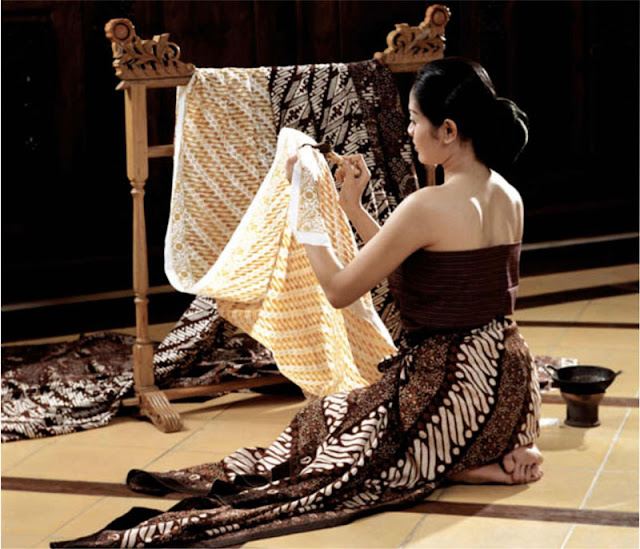
-
Bahal temple (Indonesian: Candi Bahal ), Biaro Bahal, or Candi Portibi is a Vajrayana Buddhist temple (candi) compl...
-
Ternate Sultan Mosque is located at visit Sultan Khairun region, village of Soa Sio, District of North Ternate, Ternate,...
-
Fine Arts and Ceramic Building Museum was built in 1870. At the beginning the building was used as Dutch Judiciary Institution or R...
-
If you want to get a glimpse of Florenese cultural and natural history, prehistory, as well as browse through unique and sometimes cu...
-
Museum Balanga Address: Jalan Cilik, Palangka Raya, Central Kalimantan, Indonesia, ID The Museum Balanga is located within the city...
-
Museum Balla Lompoa (Beteng Sungguminasa) Address: Beteng Sungguminasa, Jalan Kh Wahid Hasyim, Makassar, Sulawesi, ...
-
Museum Kebudayaan and Kemajuan (Museum of Culture and Progress) Address: Agats, Asmat, Papua, Indonesia, ID Known locally as the Museu...
-
Bajra Sandhi Monument is monument of Balinese People Struggle . This Monument is recognized by the name of Bajr...
-
Trinil Museum is located about 12 kilometers in the west of Ngawi is in same direction of Soerjo monument. It constitutes the complex of m...
-
Museum Negeri Propinsi Sulawesi Utara Address: Jalan Supratman, Manado, Sulawesi, Indonesia, ID Although the majority of the attractio...
- Yunita Arianti
- twitter @yunitarianti skype: yunitarianti instagram: Yunitarianti
-
▼
2012
(25)
-
▼
Oktober
(25)
- Museum Negeri Sulawesi Utara Manado
- Museum Waja Sampai Ka Puting
- Ngawi Trinil Museum
- Bali Provincial Museum
- Denpasar Fingerprint Painting Museum
- Yogyakarta, Great Mosque of Kauman
- Yogyakarta, Batik Museum
- Jakarta, Ceramics and Fine Arts Museum
- Jakarta, Ahmad Yani Sasmitaloka Museum
- Museum Lapawawoi Watampone, Pulau Selayar, South S...
- Museum Balla Lompoa (Beteng Sungguminasa) Makassar
- East Java, Sunan Drajat Museum
- East Java, Submarine Museum Surabaya
- Candi Bahal, Biaro Bahal, or Candi Portibi ,Bahal ...
- Museum Huta Bolon Simanindo Danau Toba,North Sumatra
- Museum Lombok Mataram Provincial State Museum
- Flores Maumere Ledalero museum
- Moluccas Ambon Old State Mosque Wapauwe Kaitetu
- Sultan Ternate Mosque
- Mulawarman Museum Tenggarong, East Kalimantan
- Museum Balanga Palangka Raya, Central Kalimantan
- Cenderawasih Museum
- East Papua, Museum of Culture and Progress, Agats,...
- Bajra Sandhi Museum
- Batur Volcano Museum
-
▼
Oktober
(25)
-
Bahal temple (Indonesian: Candi Bahal ), Biaro Bahal, or Candi Portibi is a Vajrayana Buddhist temple (candi) compl...
-
Ternate Sultan Mosque is located at visit Sultan Khairun region, village of Soa Sio, District of North Ternate, Ternate,...
-
Fine Arts and Ceramic Building Museum was built in 1870. At the beginning the building was used as Dutch Judiciary Institution or R...
-
If you want to get a glimpse of Florenese cultural and natural history, prehistory, as well as browse through unique and sometimes cu...
-
Museum Balanga Address: Jalan Cilik, Palangka Raya, Central Kalimantan, Indonesia, ID The Museum Balanga is located within the city...
-
Museum Balla Lompoa (Beteng Sungguminasa) Address: Beteng Sungguminasa, Jalan Kh Wahid Hasyim, Makassar, Sulawesi, ...
-
Museum Kebudayaan and Kemajuan (Museum of Culture and Progress) Address: Agats, Asmat, Papua, Indonesia, ID Known locally as the Museu...
-
Bajra Sandhi Monument is monument of Balinese People Struggle . This Monument is recognized by the name of Bajr...
-
Trinil Museum is located about 12 kilometers in the west of Ngawi is in same direction of Soerjo monument. It constitutes the complex of m...
-
Museum Negeri Propinsi Sulawesi Utara Address: Jalan Supratman, Manado, Sulawesi, Indonesia, ID Although the majority of the attractio...
- Bali (4)
- Jakarta (2)
- Java (3)
- Kalimantan (3)
- Mollucas (2)
- Nusatenggara (2)
- Papua (2)
- Sulawesi (3)
- Sumatera (2)
- Yogyakarta (2)
-
Bahal temple (Indonesian: Candi Bahal ), Biaro Bahal, or Candi Portibi is a Vajrayana Buddhist temple (candi) compl...
-
Ternate Sultan Mosque is located at visit Sultan Khairun region, village of Soa Sio, District of North Ternate, Ternate,...
-
Fine Arts and Ceramic Building Museum was built in 1870. At the beginning the building was used as Dutch Judiciary Institution or R...
-
If you want to get a glimpse of Florenese cultural and natural history, prehistory, as well as browse through unique and sometimes cu...
-
Museum Balanga Address: Jalan Cilik, Palangka Raya, Central Kalimantan, Indonesia, ID The Museum Balanga is located within the city...
-
Museum Balla Lompoa (Beteng Sungguminasa) Address: Beteng Sungguminasa, Jalan Kh Wahid Hasyim, Makassar, Sulawesi, ...
-
Museum Kebudayaan and Kemajuan (Museum of Culture and Progress) Address: Agats, Asmat, Papua, Indonesia, ID Known locally as the Museu...
-
Bajra Sandhi Monument is monument of Balinese People Struggle . This Monument is recognized by the name of Bajr...
-
Trinil Museum is located about 12 kilometers in the west of Ngawi is in same direction of Soerjo monument. It constitutes the complex of m...
-
Museum Negeri Propinsi Sulawesi Utara Address: Jalan Supratman, Manado, Sulawesi, Indonesia, ID Although the majority of the attractio...
Blogger templates
Popular Posts
Labels
Diberdayakan oleh Blogger.
Mengenai Saya

































